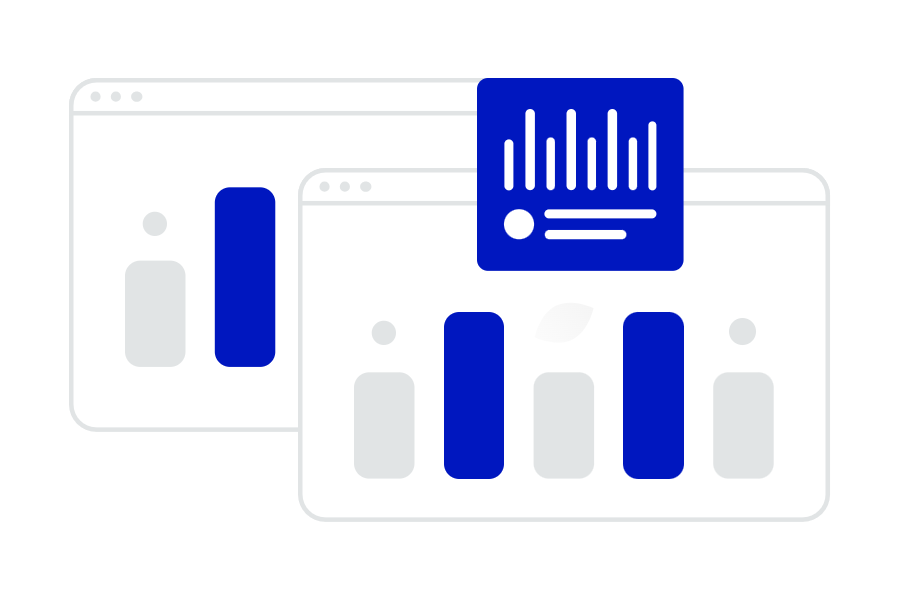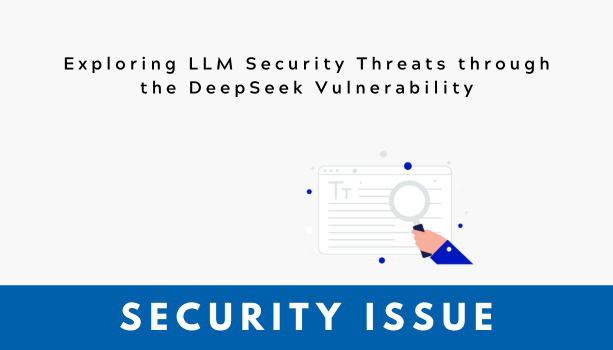[Security Issue] Exploring LLM Security Threats through the DeepSeek Vulnerability
In early 2025, the emergence of a new large language model (LLM), DeepSeek, drew significant attention from the global AI research and security communities. With performance benchmarks suggesting it could rival OpenAI’s GPT-4, DeepSeek’s release had an immediate impact on the international market, prompting a decline in the stock prices of AI-related companies, including Microsoft, a key investor in OpenAI. However, the ensuing disruption was not solely attributed to competition. Subsequent analyses uncovered critical security vulnerabilities within DeepSeek, raising serious concerns about the latent risks embedded in the rapid evolution of LLM technologies.
Shifting Landscapes in AI and Emerging Security Vulnerabilities
The emergence of DeepSeek significantly disrupted the existing dynamics of the AI market. Developed by a Chinese company, this model demonstrated remarkable capabilities in mathematical reasoning, programming, and multilingual processing. In particular, its performance in solving mathematical problems surpassed that of GPT-4, while also exhibiting strong proficiency in coding tasks. This marked the rise of a new contender in the global AI landscape, challenging the long-standing dominance of U.S.-based companies in AI technology leadership.
However, alongside DeepSeek’s impressive debut, researchers identified serious security vulnerabilities. It was found that the model could potentially leak sensitive personal information and was susceptible to malicious prompt-based attacks. Of particular concern was the discovery that prompt injection techniques could be used to bypass the model’s ethical safeguards, raising significant alarm across the global AI and cybersecurity communities.

Security Vulnerability and Global Regulatory Responses to DeepSeek
Following the disclosure of DeepSeek’s security flaws, major countries swiftly moved to establish regulatory frameworks tailored to their national interests. The United States has shown the most assertive stance, treating the issue as a matter of national security. The U.S. Department of Commerce began actively considering placing DeepSeek on the Entity List, a move that would effectively prohibit American companies from using the model. The National Security Agency(NSA) has taken the lead in drafting comprehensive security guidelines for the use of DeepSeek, which are expected to serve as federal-level regulatory standards. Meanwhile, the European Union classified DeepSeek as a “high-risk AI system” under its AI Act framework, subjecting it to strict regulatory requirements. Organizations seeking to deploy DeepSeek within the EU must now meet detailed obligations regarding data protection, system transparency, and algorithmic accountability.
In response to the security concerns surrounding DeepSeek, Japan implemented swift regulatory measures under the Economic Security Promotion Act. In January 2024, the Ministry of Economy, Trade and Industry(METI) designated DeepSeek as a “Specified Critical Technology Related to National Security.” As a result, Japanese companies intending to adopt DeepSeek are now required to undergo prior government screening. Furthermore, its use in critical infrastructure sectors has been fundamentally prohibited. Specifically, commercial deployment of DeepSeek has been restricted across 14 key industries, including finance, healthcare, transportation, and energy.
In South Korea, the Ministry of Science and ICT (MSIT) has established a multi-layered regulatory framework of DeepSeek. In February 2024, MSIT announced the “Emergency Security Measures for DeepSeek”, which outlined specific guidelines for its use in public institutions and major private-sector organizations. Under these measures, the use of DeepSeek is completely prohibited within public agencies. In the private sector, deployment is permitted only after passing a security evaluation conducted by the Korea Internet & Security Agency(KISA). Additionally, the Personal Information Protection Commission(PIPC) introduced a special supervisory framework for DeepSeek’s handling of personal data. Companies utilizing DeepSeek are now required to conduct mandatory privacy impact assessments and submit quarterly reports on data processing activities.
While countries have enacted stringent regulatory measures in response to DeepSeek, these actions represent only an initial step toward addressing the underlying challenges. The DeepSeek incident has intensified global concerns regarding the security vulnerabilities inherent in large language models(LLM), elevating the issue as a critical agenda item in the ongoing development of AI technologies. The vulnerabilities discovered in DeepSeek are not isolated to a single model; rather, they may reflect structural weaknesses common across most existing LLMs. As such, the systematic analysis of these security threats and the formulation of robust countermeasures are essential for ensuring the safe and responsible advancement of AI systems.

Types of Security Threats in LLMs(Large Language Models) and Countermeasures
While numerous countries have introduced stringent regulatory measures in response to the DeepSeek incident, these actions represent only an initial step toward addressing the underlying challenges. The case has significantly heightened global awareness regarding the security vulnerabilities inherent in Large Language Models (LLMs), positioning this issue as a critical priority in the ongoing advancement of AI technologies. The security flaws revealed by DeepSeek may not be unique to a single model but rather indicative of structural weaknesses common to many existing LLMs. Accordingly, a systematic analysis of these threats and the development of comprehensive countermeasures are essential to ensure the responsible and secure evolution of AI systems.
To effectively address these security threats, it is essential to establish robust input validation mechanisms. This includes implementing through verification processes for all user inputs, deploying filtering systems capable of detecting and blocking malicious prompts, and utilizing real-time monitoring to identify abnormal input patterns. Conducting regular security audits is also highly recommended, including periodic vulnerability assessments to identify potential risks, validation by security experts, and the timely application of patches to address discovered weaknesses. Strengthening data protection frameworks is equally important by applying data anonymization techniques and encrypting sensitive information. Additionally, developing and enforcing AI ethics guidelines can be beneficial; by setting clear ethical standards and providing regular training, organizations can ensure proper adherence while establishing response procedures for potential ethical violations.
The DeepSeek incident has served as a critical reminder of the severe risks that may accompany the advancement of AI technologies. While AI is expected to continue evolving rapidly, the associated security threats are also likely to become increasingly sophisticated. Therefore, it is imperative to maintain a careful balance between technological innovation and security enhancement, requiring a systematic and collaborative response from the international community. To achieve this, governments, corporations, and research institutions must work together to establish security standards and ensure continuous monitoring and improvement of AI systems.
* Would you like to learn more?
We invite you to discover how we can help your business.
